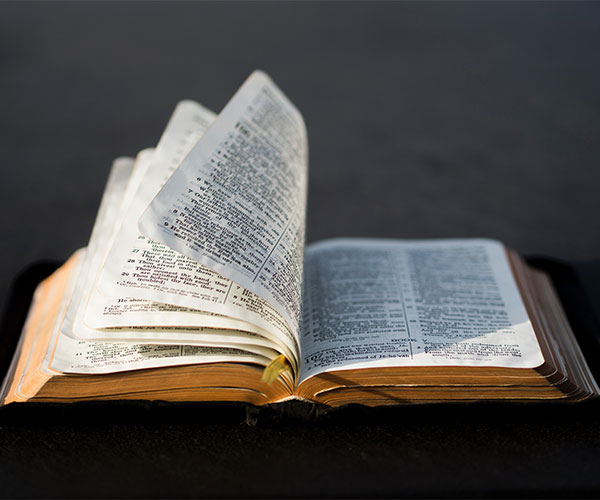
the Bible – the book
III. THE NEW TESTAMENT TEXT
D. The Manuscript Evidence
Biblical scholars have an abundance of material available to them as they seek to study the text of the New Testament: 1) The Greek manuscripts of the New Testament now available; 2) the copies of the early versions of the New Testament now available; 3) the citations made by the early Church Fathers of the New Testament documents that were available to them. On this page, we will explore the first group, the Greek manuscripts.
THE GREEK MANUSCRIPTS
1. The Original Autographs: This term describes the original documents that were penned by the author. No original autograph is known to exist today. It is believed that the originals were most likely prepared on papyrus scrolls which in time would have perished without having taken extraordinary measures to preserve them. Without the originals, scholars must turn to every other available piece of information to “reconstruct” or verify the text of the New Testament.
2. Biblical Papyrus: Over the last 125 years a collection of biblical papyrus manuscripts has been gathered and documented by archeologists and biblical scholars. This collection ranges from a small fragment containing a few verses to large portions of the New Testament. One of the more notable examples is the “John Rylands Fragment” also known as P52 which contains a small portion of the gospel of John dating to approximately 125AD. This collection of Greek manuscript portions consisting of over seventy-five items is the first important piece of information available for the reconstruction of the New Testament text.
3. The Uncial Manuscripts: These Greek manuscripts containing large portions of the New Testament, form the backbone of the information needed to accurately reconstruct the New Testament text. This collection of manuscripts deriving its name from the large box like letters that are found within each document dates from the fourth to the ninth centuries.
The three most famous and valuable in this collection are codex Vaticanus, Sinaiticus and Alexandrinus. Vaticanus, presently housed in the Vatican library, dates at 350 AD and is a high quality codex of vellum containing most of the New Testament, except for part of the book of Hebrews and the remaining books after that. Codex Sinaiticus also dated at 350 AD contains the entire New Testament as we have it today except for 24 verses. Codex Alexandrinus dates from 450 AD and contains most of the New Testament except for approximately 34 chapters as compared to our English translation. Both Sinaiticus and Alexandrinus are housed at the national library of the British museum. These three biblical manuscripts, along with the rest of the Uncial manuscripts, numbering about three hundred in all, provide a solid foundation for the accurate reconstruction of the New Testament text.
4. The Minuscule Manuscripts: These manuscripts date from between the ninth to the fifteenth centuries and number over 2500. They also gain their name based on the style of lettering which is a small cursive type of letter. While these manuscripts are not as valuable as the Uncials, because they come from a later time period, they are by themselves an extremely important and valuable witness to the text of the original New Testament documents.
5. The Lectionaries: These important witnesses to the original text of the New Testament were created for local church instructional purposes and worship. These documents which number well over 2,000 are dated from the fourth to the twelfth century. There is a wide range of material both in quality and quantity represented in the lectionaries. From these manuscripts alone the text of the New testament can be reproduced many times over except for the book of Revelation and some portions in the book of Acts.
The information supplied to us by the Greek manuscripts provides an overwhelming wealth of data from which scholars can easily reproduce an accurate and trustworthy reconstruction of the New Testament text. No other document comes to us from antiquity with the quantity or quality of manuscript evidence as does the New Testament. Building on this rock-solid foundation let’s now consider the testimony of the early versions of the New Testament.

